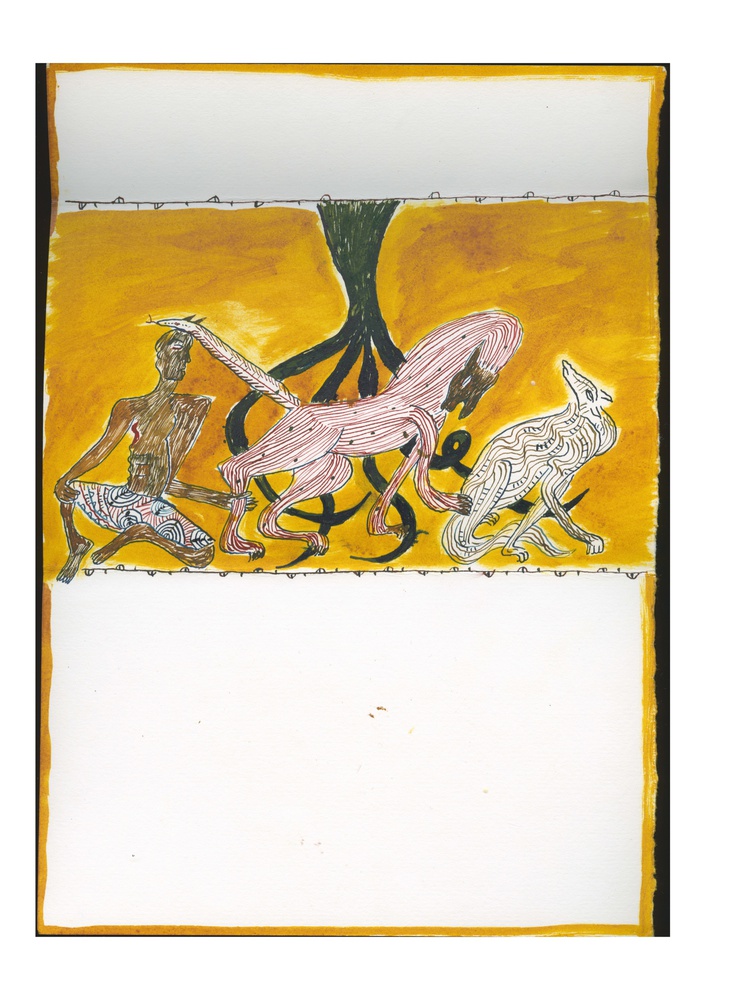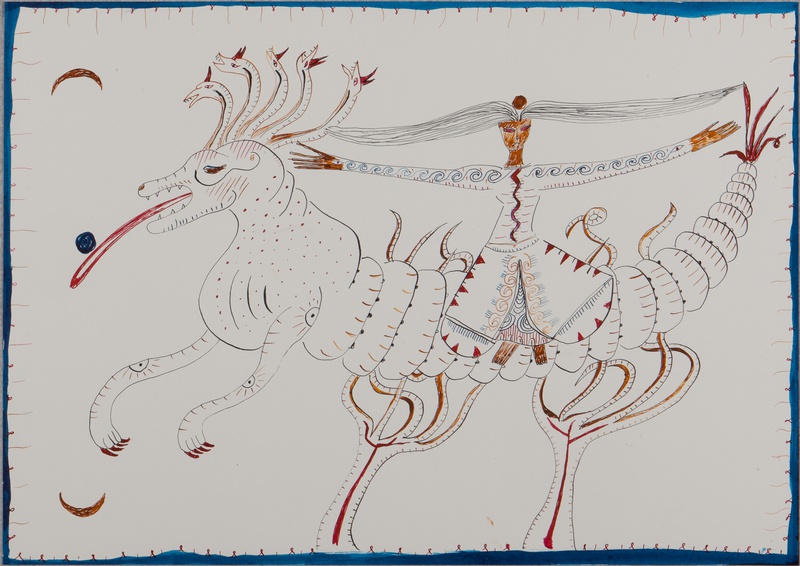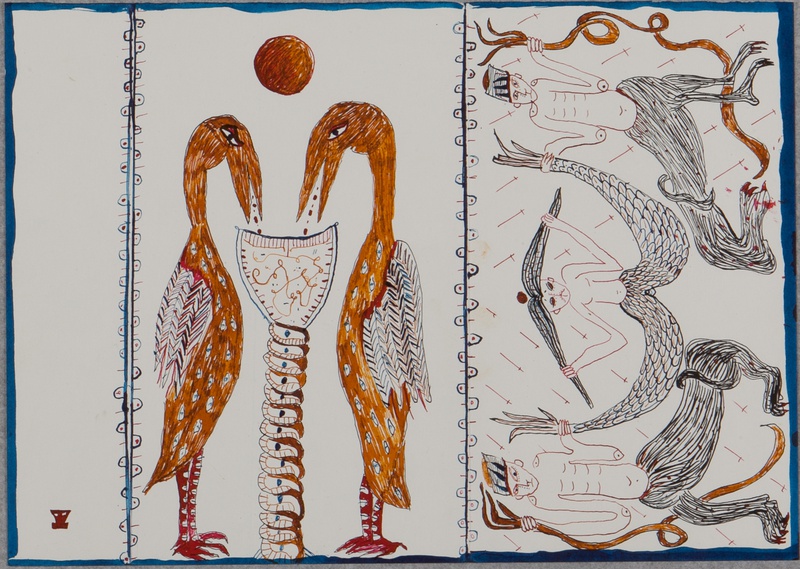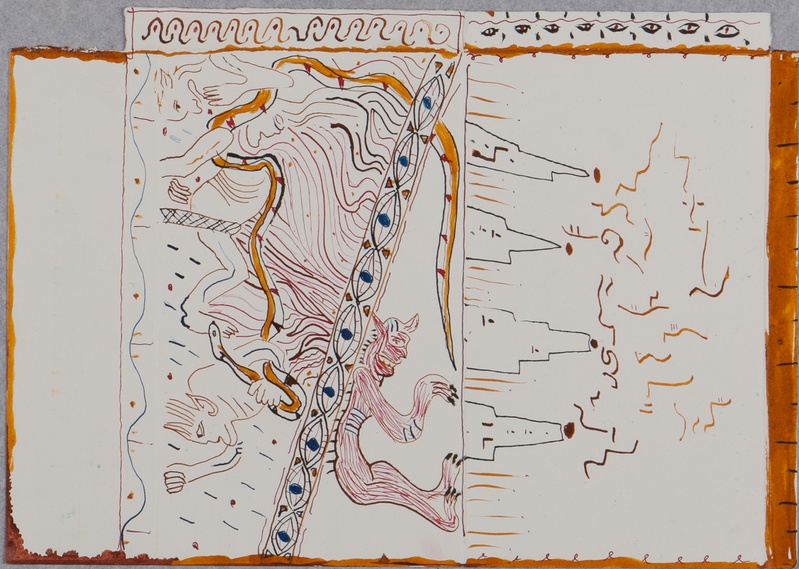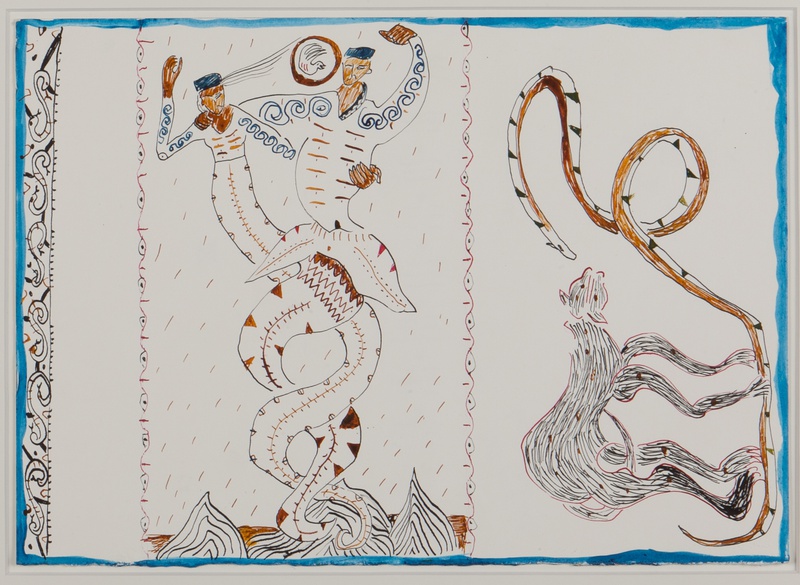The sparingly coloured-in ink drawings of Habima Fuchs (pseudonym of Astrid Sourkova) seem to come straight from a distant past. They are full of medieval, religious references, hieroglyphs, totem poles, primitive patterns and mythological animals including snakes, dragons, birds and lions – or fabulous part-human, part-animal creatures. However, their intentions and nature remain unclear: are these friendly creatures or aggressive monsters?
An important theme in the work of Habima Fuchs is the ambiguous relationship between humans, animals and nature. She doesn’t only make drawings but also ceramic sculptures about this theme. Habima Fuchs regularly goes on long pilgrimages to various countries. The natural elements she is confronted with on her journeys, such as wind and water, can be found in her work. These natural phenomena are often surrounded with a touch of mysticism by Fuchs.
Habima Fuchs uses all of these ingredients to create mysterious, often apocalyptic looking primitive worlds where good and evil co-exist. Even though these imaginative drawings initially come across as naive and childlike, they particularly bear witness of a search for good and bad. Fuchs softens the boundaries between dreams and nightmares and leaves the interpretation of her works up to the viewers.

